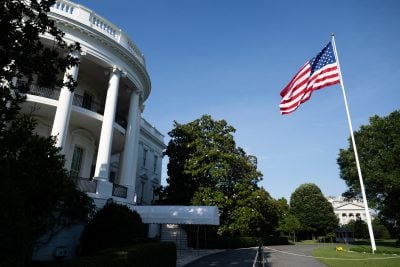Pravin Gordhan, South Africa’s Minister for Public Enterprises, is either a genius in corporate debt restructuring or the doyen of all risk-takers.
While his boss, President Cyril Ramaphosa was hobnobbing as a guest with the likes of Joe Biden and host Boris Johnson at the G7 Summit in sunny Cornwall, Gordhan was busy trying to sell off the family junk – the debt-ridden state-owned enterprises (SOEs) such as Eskom, South African Airways (SAA) and Sanral (the national roads agency).
They are the bane of Minister of Finance Tito Mboweni’s plans to stabilise the country’s growing debt – 80.3% of GDP for 2020/21, and projected to rise to 88.9% in 2025/26. Gross loan debt is projected to increase from R3.95trn ($280bn) this year to R5.2trn in 2023/24.
Loss-making parastatals have been the bane of African economies – a drain on the national coffers and an obstacle to public debt stabilisation. They are consumed by a bloated bureaucracy and over-employment. They are often based on a misplaced sense of national pride, driven usually by a leftist ideology centred on a ‘people’s ownership’ of ‘national assets’.
So when on 11 June, Gordhan signed a “groundbreaking public-private partnership (PPP) for SAA” with Takatso Consortium, Mboweni must have let out a huge sigh of relief. Last year he reluctantly forked out R10.5bn ($730m) to keep SAA afloat.
The majority Black-owned Takatso will own 51% while the state will retain 49%. SAA’s historical debt of $1bn remains the responsibility of Pretoria. Its list of creditors is 32 pages long.
But all is not as rosy as it might appear at first sight. Selling off these assets to private ownership, albeit with some caveats – privatisation to you and me – is politically sensitive even in developed countries. SAA is no exception!
Investors, bankers and the IMF/World Bank Group love privatisation. The International Finance Corporation (IFC) for instance midwifed the sell-off of Kenya Airways in 1995, in which Holland’s KLM took a 26% strategic stake.
The partnership, even after the KLM/Air France merger, was largely profitable. The impact of Covid however put paid to it. In September the partnership mutually dissolved.
When it comes to airlines, one choice is to have a state-owned model, such as Ethiopian Airlines, Africa’s largest and most profitable service, which last October suspended privatisation moves as part of wider economic reforms because it was “doing well”. Or, having a PPP where the state shares ownership with a strategic investor; or, going for a full-scale privatisation, where the law acts as the guardian of the national interest.
Gordhan has opted for a PPP, which carries huge risks. Nevertheless, he is bent on diluting the government’s shareholding and eliminating the burden to the taxpayer, but he says the government will retain a ‘golden share’ of 33% of voting rights.
The reasons against having a PPP are manifold. Using the sop of Black Economic Empowerment (BEE) to make the sell-off palatable to radical ANC factions, does not remove the state’s future liabilities. Several BEE projects have been mired in corruption.
Devil in the detail
The devil of the partnership deal is in the detail, which has yet to be revealed. The state-owned Public Investment Corporation – itself investigated for alleged corruption last year – holds 30% shares in the Harith Group, one of the Takatso Consortium’s partners, along with Global Aviation.
SAA is currently under “business rescue protection”, which saw 80% of staff laid off. The plan is to relaunch domestic and regional services in September and international services thereafter.
A public offering down the line – to allow ordinary South Africans to invest in listed national assets – is dependent on the airline becoming profitable. How likely is this in an industry that has been clobbered by the pandemic and is projected to take some five years to get back to pre-Covid levels?
There are also questions about the consortium’s ability to run an international airline as opposed to a local budget airline and charter service, which it has been operating. Injecting a mere $258m to relaunch SAA hardly matches the aspiration of a ‘world-class’ airline.
The PPP is far from being a done deal. Due diligence on almost every facet of SAA’s future operations and crucially, the future of its subsidiaries, Mango Airlines, SAA Technical and Air Chefs, has yet to be carried out.
This begs the question: Why did Gordhan not opt for a continental troika tie-up with Ethiopian Airlines, and Kenya Airways, international carriers with proven credentials, both interested in SAA?
Has political accommodation once again got in the way of rational business?
Want to continue reading? Subscribe today.
You've read all your free articles for this month! Subscribe now to enjoy full access to our content.
Digital Monthly
£8.00 / month
Receive full unlimited access to our articles, opinions, podcasts and more.
Digital Yearly
£70.00 / year
Our best value offer - save £26 and gain access to all of our digital content for an entire year!
 Sign in with Google
Sign in with Google 



